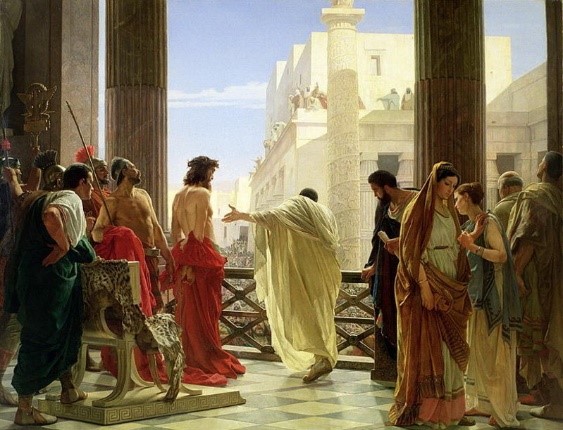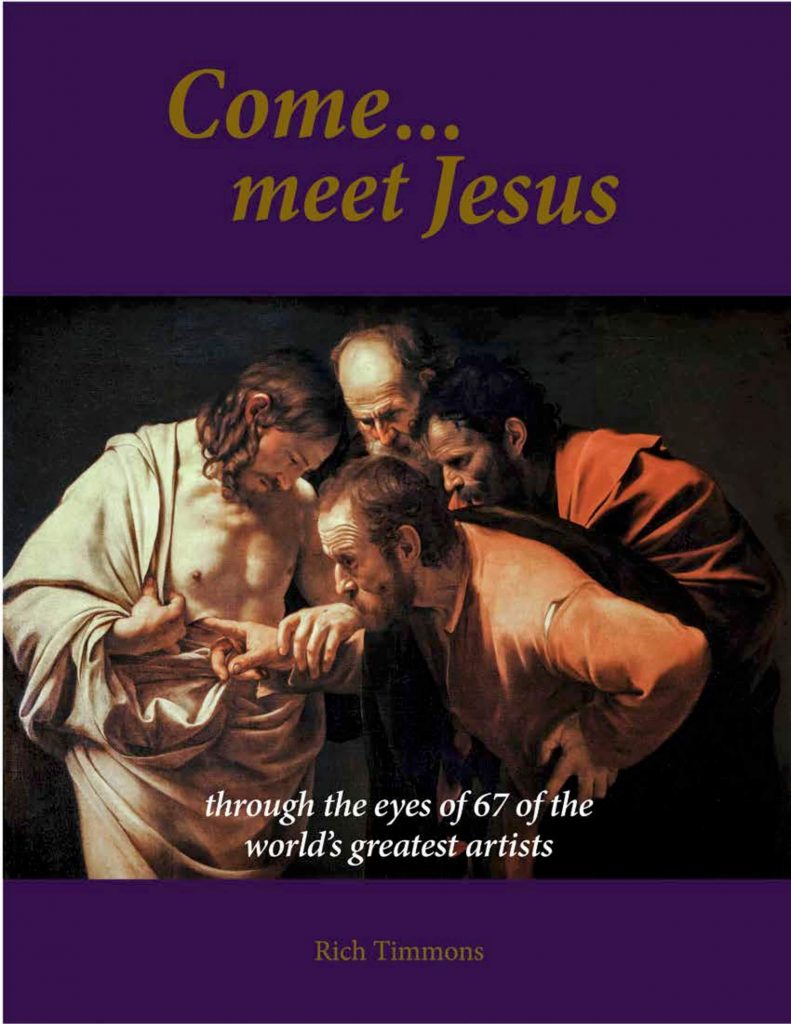When therefore they were gathered together, Pilate said to them, “Whom do you want me to release to you? Barabbas, or Jesus who is called Christ?” For he knew that because of envy they had delivered him up. While he was sitting on the judgment seat, his wife sent to him, saying, “Have nothing to do with that righteous man, for I have suffered many things today in a dream because of him.” Now the chief priests and the elders persuaded the multitudes to ask for Barabbas and destroy Jesus. But the governor answered them, “Which of the two do you want me to release to you?” They said, “Barabbas!” Pilate said to them, “What then shall I do to Jesus who is called Christ?” They all said to him, “Let him be crucified!” Matthew 27:17-22
This painting is like a time machine, bringing the viewer to experience firsthand the very moment of Jesus’ condemnation to death. The realism and lavish detail in the architecture, dress, and individualization of the figures make the setting and people believable. The attention to the quality of light spilling from the bright distant background across the marble floor and shining through Pilate’s robes anchors it to a specific moment in time. But more than anything, it is the perspective from which Ciseri chose to depict this moment that makes the viewer feel like they are truly there.
We are “backstage,” inside the very room where the action is taking place, as opposed to most “ecce homo” paintings where the perspective is of a crowd member, or off to the side, taking it all in. Here is it as if we are a servant or guard of Pilate’s household close to the action, yet not a part of it, quietly trying to take it all in. Pilate is where the eye goes first, since he is central and surrounded by light, and then his gesture takes us to Christ, the silent lamb. From there the eye bounces all around the room at the different figures, the magnificent architecture, the vast mob outside. Everyone is facing away, so while there is a lot of visual detail to dwell on in terms of texture, contrast, and pattern, the eye doesn’t linger long on anything because it is searching for an emotional and psychological ‘in’ via someone’s face, but can’t get it. It feels like being a child in the background of some important adult event. And then, the viewer finally lands on the face of the only figure turned toward us. She isn’t looking at the viewer and is so absorbed in her own thoughts that it feels intrusive to look at her. But, at the same time, it feels as if she is so absorbed in thought you know she won’t notice, so you keep looking. This must be Pilate’s wife. Her face does not give much away, but she reaches out toward her companion for emotional support or physical support, or both. She is deeply disturbed by this. We aren’t told what her dream was, if she was often given to superstition or if this was a unique experience for her, or if she ever came to have any real saving faith in this innocent condemned man. But her opposition to this event, in scripture and in the painting, serves to contrast both the unfounded frenzied hate of the Jewish mob as well as the cool curiosity, confusion, annoyance, and ultimate indifference of the other Romans around her. He was not much to them. They didn’t know that while He stood there, silent, He knew what was coming. He knew the sinful hearts and spiritual forces stirring up the storm of hatred from his people. He knew the ignorance and distance in the hearts of the Romans. And He knew that His death was the only thing that would bring them light, close the gap, and stamp out the power of the enemy.


